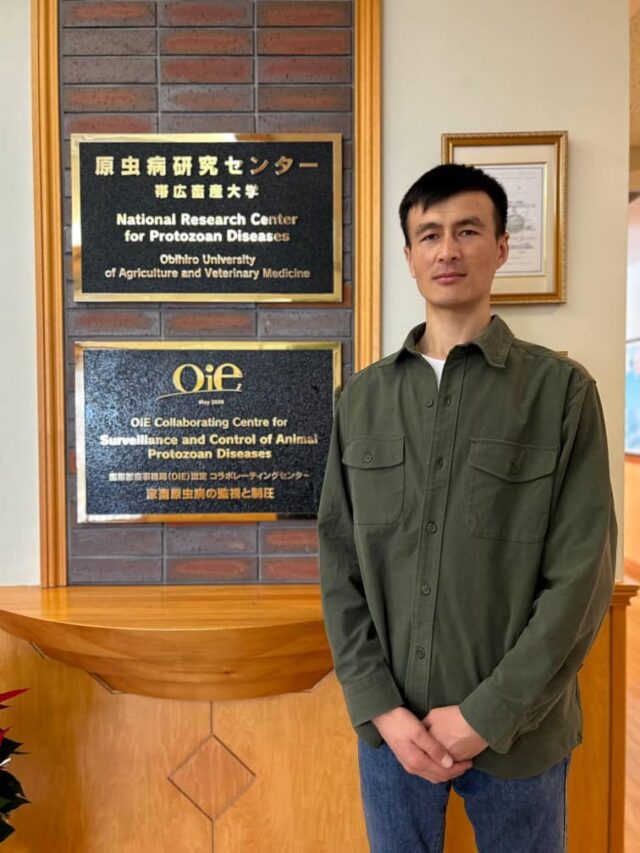Name: Berdikulov Atabek
Affiliation: Kyrgyz Research Institute of Veterinary named after Arstanbek Duisheev, Togolok-Moldo 60, Bishkek 720033, Kyrgyzstan
Position: Researcher
Term: September 2023 – December 2023
Host researcher: Prof. Naoaki Yokoyama (English /Japanese)

Circumstances of application:
Kyrgyzstan relies heavily on agriculture, with the livestock sector being crucial to its economy. The growth of the livestock sector is however undermined by infectious diseases, including those caused by protozoan parasites. Despite this, limited resources and expertise hindered the progress of research on controlling these diseases. As a result, we have entered into an MOU with the NRCPD to strengthen research on controlling protozoan diseases in livestock. Our recent survey focused on hemopathogens infecting cattle as part of this research collaboration. Nevertheless, there is a lack of research investigating the prevalence of equine piroplasmosis in horses in Kyrgyzstan. Consequently, I have applied for the position of foreign visiting researcher to survey equine piroplasmosis in horses in Kyrgyzstan.
Research activity in NRCPD:
Blood samples were collected from a total of 226 horses across all seven provinces of Kyrgyzstan, namely Chuy, Issyk-Kul, Naryn, Talas, Jalal-Abad, Osh, and Batken. These blood samples were subjected to DNA extraction, followed by specific PCR assays targeting Theileria equi and Babesia caballi. Our findings revealed that 56 (24.8%) and 7 (3.1%) of the tested horses were positive for T. equi and B. caballi, respectively. Theileria equi was detected in all surveyed provinces, whereas B. caballi was found in five provinces, with the exception of Talas and Osh. Subsequent genotype-specific PCR assays showed that T. equi-positive horses harbored all five genotypes (A, B, C, D, and E). On the other hand, phylogenetic analysis of B. caballi rap-1 sequences detected the genotypes A1 and B. These findings have important implications for managing equine piroplasmosis in Kyrgyzstan.
Future prospects:
I am planning to collaborate with the NRCPD to conduct a survey on equine clinical piroplasmosis in horses and donkeys throughout Kyrgyzstan. Additionally, I am in the process of preparing myself to become a PhD candidate at NRCPD in the near future.
